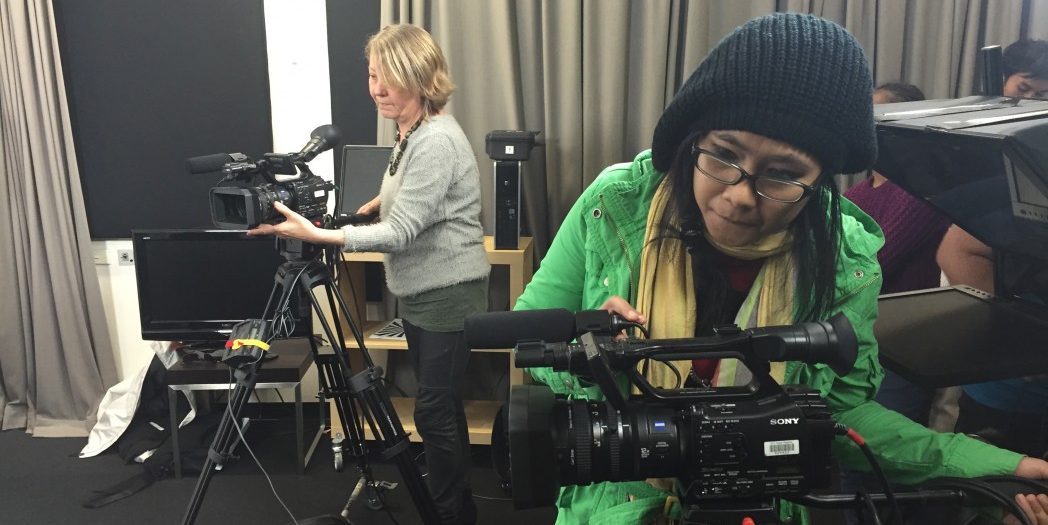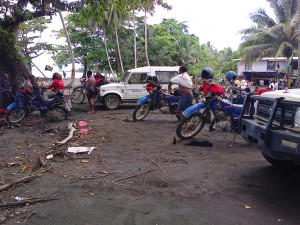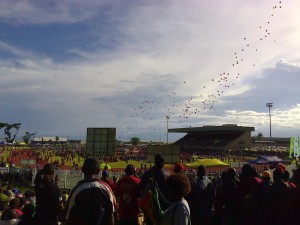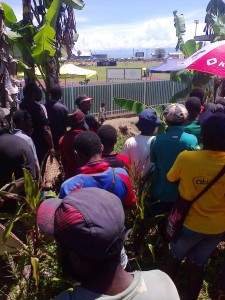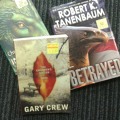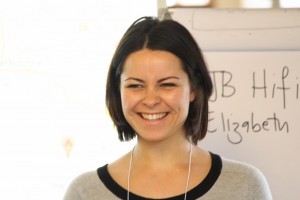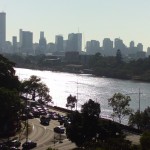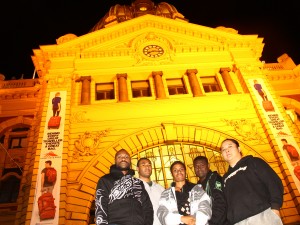OLEH: Duma Tato Sanda
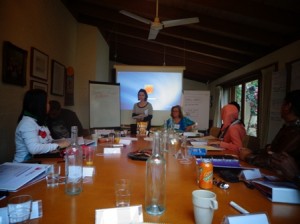
Ini sesi bersama Suzy Woodhouse
BERUNTUNG, mungkin itu kata yang tepat untuk menggambarkan kesempatan 11 jurnalis dari kultur berbeda di 4 negara di Asia – Pasifik: Indonesia, Papua New Guinea, Solomon dan Fiji untuk belajar jurnalisme di negeri kangguru, Australia.
Peserta dari Indonesia adalah Lovina Soenmi, Tommy Apriando, Achmad Choirudin, Dian Muhtadiah Hamna, Wan Ulfa Nur Zuhra dan saya. Gynnie Kero, Gabriel Bego termasuk Mapun Pidian dari Papua New Guinea, Rickson Jorban Bau asal Solomon, sementara Tevita Komaidruka Vuibau datang dari Fiji.
Cahaya Papua adalah media cetak tempat saya bekerja, di ibukota Papua Barat, Manokwari. Tommy kontributor portal berita lingkungan mongabay, Achmad bekerja di Selamatkan Bumi, Wan Ulfa kontributor Lentera Timur, Dian di Fajar Makassar, Lovina di Riau Corruption Watch, Gynnie kerja di The National, Gabriel dan Mapun di NBC, sedang Tevita di Fiji Times.
Para jurnalis ini tiba di Melbourne 24 Agustus 2013 lalu, mereka akan kembali ke negara masing-masing pada 28 September 2013. Selama di Australia, mereka akan cerita pengalaman dan belajar jurnalisme dengan tema: Mining, Media dan Development yang difasilitasi oleh Asia Pacific Journalism Centre. APJC adalah sebuah organisasi yang konsen pada peningkatan kualitas jurnalis di Asia – Pacific. APJC berkantor di Melbourne, Australia
Para jurnalis akan bertemu para ahli di bidang jurnalisme baik praktisi maupun pengajar di sejumlah universitas di Australia ketika mereka belajar. Mereka juga akan kunjungi sebuah tempat berbeda di Australia dan langsung ke pengalaman untuk lihat praktek pengelolaan tambang perusahaan Tambang di Australia.
***
Sesi pertama, Suzy Woodhouse. Ia coba beri pemahaman tentang kepemimpinan, terutama dalam posisi kita sebagai jurnalis yang punya pengaruh besar buat lingkungan sekitar.
Susi bilang wartawan harus bisa identifikasi dirinya, baik yang terlihat atau tersembunyi. Ini penting sebab wartawan bisa mengendus lebih dalam soal diri orang lain atau narasumbernya setelah dia bisa bedakan mana yang terlihat atau tampak dan mana yang tersembunyi atau disembunyikan. Metode ini dia sebut Johari Window.
Ia juga bagi materi tentang MBTI, ini sebuah alat untuk identifikasi diri. Susi bilang alat ini cukup berguna karena bisa dipakai untuk melacak sedikit kebiasan narasumber kita. Ini baik karena kita bisa tahu bagaimana memposisikan diri secara luwes ketika berhadapan dengan para sumber berita. Singkatnya alat ini bisa bantu kita lakukan wawancara dengan baik.
Banyak cara lain yang Susi sampaikan juga. Ia coba buat kita bisa bekerjsama dengan tim secara baik. Kerja tim menurut Susi penting ketika kita bekerja sebagai jurnalis. Cara ini ia bagi dengan melibatkan kita pada kelompok berbeda untuk bahas topik berbeda. Sesi materi Susi 4 hari.
***
Sesi kedua disampaikan Nigel McCarthy. Ia adalah instruktur jurnalisme bisnis di Australia. Nigel banyak berikan cara praktis menulis berita, seperti cara mencari informasi dari sumber terbuka yang bertebaran di internet. Misalnya, Nigel bilang laporan tahunan atau laporan keuangan sebuah perusahaan yang di posting di website perusahaan adalah contoh informasi yang bisa dipakai sebagai informasi awal untuk menulis berita.
Dalam sesi Nigel, kita juga dikenalkan tentang : Civil Society and the Extractive Industries Transparancy Initiative oleh koordinator Advokasi Tambang Oxfam Australia Serena Lillywhite. Serena cerita soal peran perusahaan tambang bagi komunitas lokal di sekitar tambang. Bagi Serena Tambang belum bisa memberi peran yang berarti kepada perempuan, yang merupakan kelompok paling rentan dalam eksploitasi.
Professor Jurnalisme dari Monash University, Philip Chubb dalam materi Mining, Media dan Climate Change banyak ceritakan soal relasi media, tambang dan perubahan iklim di Australia. Sesi ini ia cerita panjang, tapi banyak dalam bahasa Inggris yang sangat baik. Intinya di Australia hubungan tiga bidang itu cukup rumit. Isu perubahan iklim telah membuat sejumlah kelompok politik di Australia saling berhadap-hadapan.
Akhirnya saya harus katakan, tulisan ini adalah tulisan saya dalam sesi belajar Digital Journalism, Jumat, 6 September 2013, yang akan diposting di weblog saya, hehehehe…. Sesi ini dipandu oleh Renee Barnes.
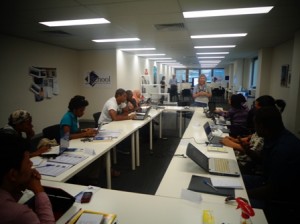
Ini sesi Digital Journalism. Renee Barnes sedang berbicara kepada peserta workshop.
